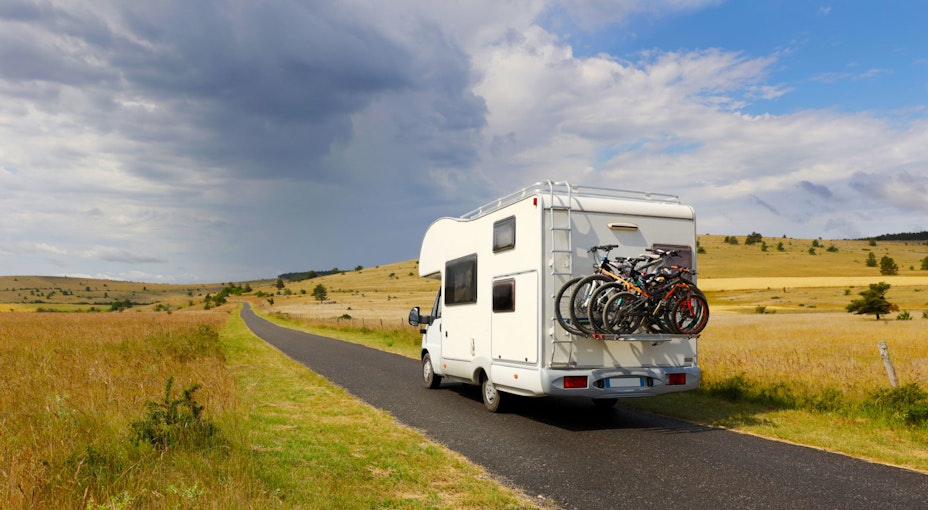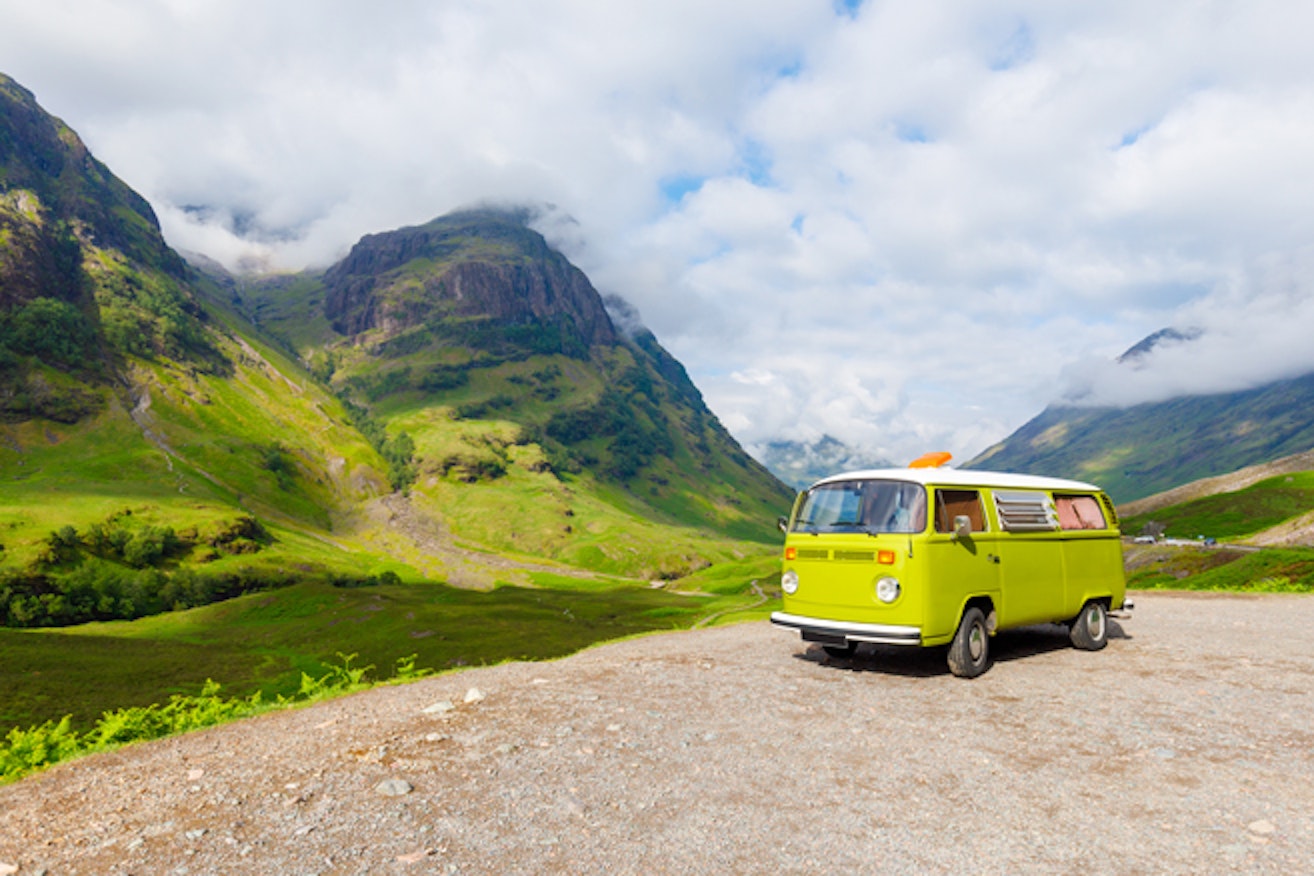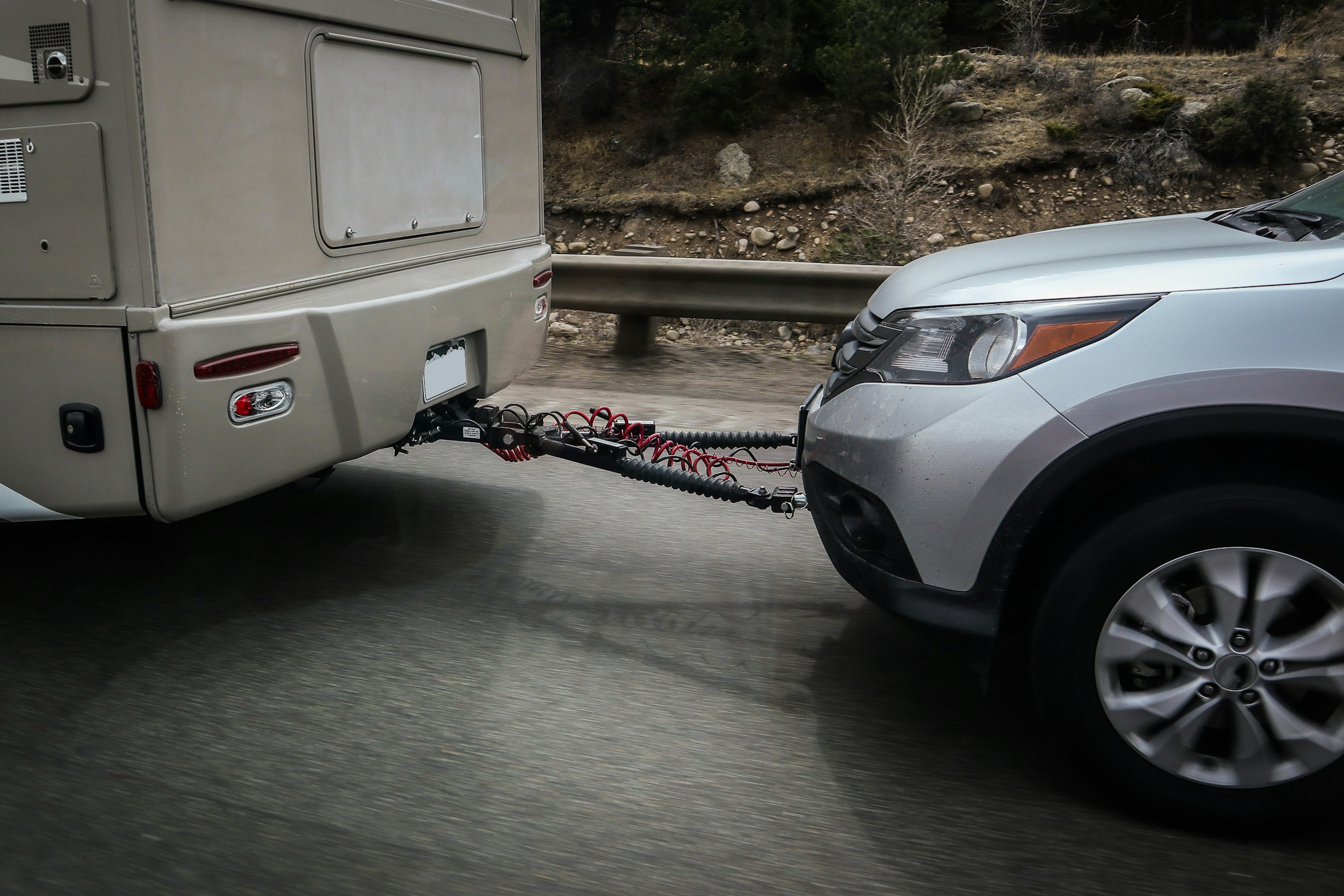Guide to motorhome and campervan reversing cameras
By Alan Boswell Group

In this article
Certain gadgets are useful and help make your life as a motorhome or campervan owner that bit easier, while others can seem like an unnecessary expense. Reversing cameras have become increasingly popular in cars in recent years, with some people wondering how they got by without them – leading to many owners considering them for their motorhome or campervan. If you’re not familiar with them already and want to find out how they can make your vehicle easier to manoeuvre, read on for all the details.
What is a reversing camera?
Put simply, it’s a camera that fits to the rear of your vehicle that allows you to see what is behind you in real-time via a screen on your dashboard. This means you don’t have to rely on your mirrors or twist round to see out of your rear window.
How do reversing cameras work?
While there are a range of options available, the first thing you’ll need to do is fit a camera to the rear of your vehicle. The camera will then provide you with a live feed via an additional screen on your dashboard or in some cases, can be linked to your vehicle’s existing dashboard screen. The camera can be powered via wires that connect to your car’s fuse box or a battery pack and will be activated when you put your car into reverse.
Why should I get a reversing camera for my motorhome or campervan?
As you’ve likely already found, reversing in your motorhome or campervan can be tricky, especially when you have no rear visibility and side mirrors can only help so much as they don’t give you a direct view of the space behind you. Towing with your vehicle can make your blind spot even worse and increase the risk of damaging your vehicle.
Reversing cameras can improve safety and prevent collisions by giving you a much clearer view of what’s behind you. Indeed, from 2021, manufacturers need to fit new vehicles with them as standard. Fitting a reversing camera to your existing motorhome or campervan could help you overcome all these problems and make your life on the road a more enjoyable experience.
What are the different types of reversing cameras for motorhomes or campervans?
You can broadly split reversing cameras into two categories – wired and wireless. As with all technology, each type has benefits and drawbacks.
A wired system has a physical connection between the camera and monitor and tends to offer the best quality picture as well as being fairly free from interference. If you have a large motorhome, you could go for a multi-camera option to give you more visibility.
A wireless system means there’s no physical connection between the camera and screen. In some cases the camera will incorporate a transmitter, while others have a separate transmitter that connects to the camera via wires.
Wired reversing camera system
Pros
Tend to be more robust and hard-wearing than a wireless system
Generally, they offer better image quality than a wireless system
Better suited to larger motorhomes or when you are towing
Multi-camera options are available
Cons
Tend to cost more than wireless models
Fitting a wired system is generally more involved as the wires will need to be routed through your vehicle to make a physical connection, so you may need to pay a specialist to install one
Wireless reversing camera system
Pros
Generally easier to install
Good if you’re on a tight budget
Suitable for small and medium-sized vehicles
Multi-camera options are available
Cons
Image quality is not as good as wired models
Less reliable and can suffer from interference and glitches
Tend to be less durable than wired models
Not so good if you have a larger vehicle.
Wireless camera systems use two forms of technology to transmit a signal – analogue and digital.
Analogue systems
These tend to be cheaper than digital systems but are far more prone to suffer from interference and poor image quality. Think of it in terms of FM versus digital radio.
Digital systems
Are generally a better option, although think carefully about the specified operating range and choose something that’s longer than you think you’ll need, as this will minimise signal interference from external sources.
Bullet reversing cameras
Bullet style cameras tend to be the cheapest option and are often fixed lower down the back of the motorhome, often at the same height as the rear number plate. Make sure to check what the camera’s field of view is though - not all cameras that claim to have a wide field of view actually have one and some won’t state what it is at all. Also, be careful to check the pixels if the camera claims to be high definition.
Of course, there are more expensive bullet camera options available which will give a better-quality image, but if they don’t have a wide field of view they won’t be of much use on a motorhome.
Fixed/tilting wide angle reversing cameras
This kind of camera tends to be more popular with motorhome owners as, when mounted at the top of the vehicle, it has a wide viewing angle that will allow you to see both rear corners. Cameras with a wide enough field of view will even allow you to see your rear tow hitch if you have one.
The more expensive models have more features. For example, a premium camera will be motorised which will allow you to tilt the camera from the safety of your vehicle’s cab.
Other key features to consider
There are several other factors to consider when deciding which kind of reversing camera system is best for you:
Screen mounting location – think about whether you want to mount a screen on your dashboard or windscreen.
Screen/monitor style – before you buy a screen, check that you don’t have any existing equipment in your vehicle that you can use to view your camera on, such as an inbuilt sat nav. If you do this though, make sure the screen has a good enough resolution to accurately display the images it receives from your camera. Some wireless cameras can display the image on a mobile phone or tablet, although you may find that a mobile phone screen isn’t big enough for you to be able to use the camera effectively.
Ingress Protection (IP) rating – while most cameras will claim to be waterproof to some degree it is best to check the IP rating, which evaluates how well protected it is from moisture, dirt, and dust. IP66 and IP67 are common ratings, with the six meaning the camera is dust tight and the second digit rating the level of protection from moisture – the higher the number the better protection it has.
Illuminated cameras – your vehicle’s rear lights may not give a strong enough illumination for the camera, so you could look for a camera that has its own additional light source.
Battery life – if you decide to go for a wireless model make sure it has a good quality battery pack as you don’t want the charge to fail half-way through a trip.
Installing a reversing camera to your campervan or motorhome could reduce the likelihood of an unfortunate mishap when you’re trying to fit your vehicle into a tight spot. If you own a large motorhome then you’ll probably want to go for a wired system, ideally with a twin camera, but for a smaller vehicle a wireless model can provide extra support for the limited times that you need to use it.
Unless you feel confident, it’s also worth paying for a professional to install a wired system as they can be fiddly and time consuming to fit properly.
Overall, if you own a motorhome or a campervan it can be worth investing in a reversing camera as it will make your life easier and cut down on the chances of you having an accident in your vehicle.
Need help with your insurance?
Whether you need a quote, have a general enquiry, or want to talk it through over the phone, we're here to help.
Make an enquiry – general and locations
Related guides and insights

How to avoid underinsuring your motorhome or campervan
A shortage of new motorhomes and campervans means that many second-hand vehicles are rapidly increasing in value. While good news for self-drive hire vehicle owners, it does increase the risk of being underinsured.

Guide to towing with your campervan or motorhome
Towing with your motorhome or campervan can give you more flexibility, so check out our top tips for how to make towing work best for you.

Owners guide to renting out your campervan or motorhome
Renting out your campervan or motorhome could be a great way to cover costs and even make a little extra cash. Our guide gives you an idea of what hiring out your vehicle entails.

Self-drive hire case study: Seekers Motorhomes
We speak to Gill Hodgson and Paul Frankland of Seekers Motorhomes to find out more about running a self-drive-hire business.
